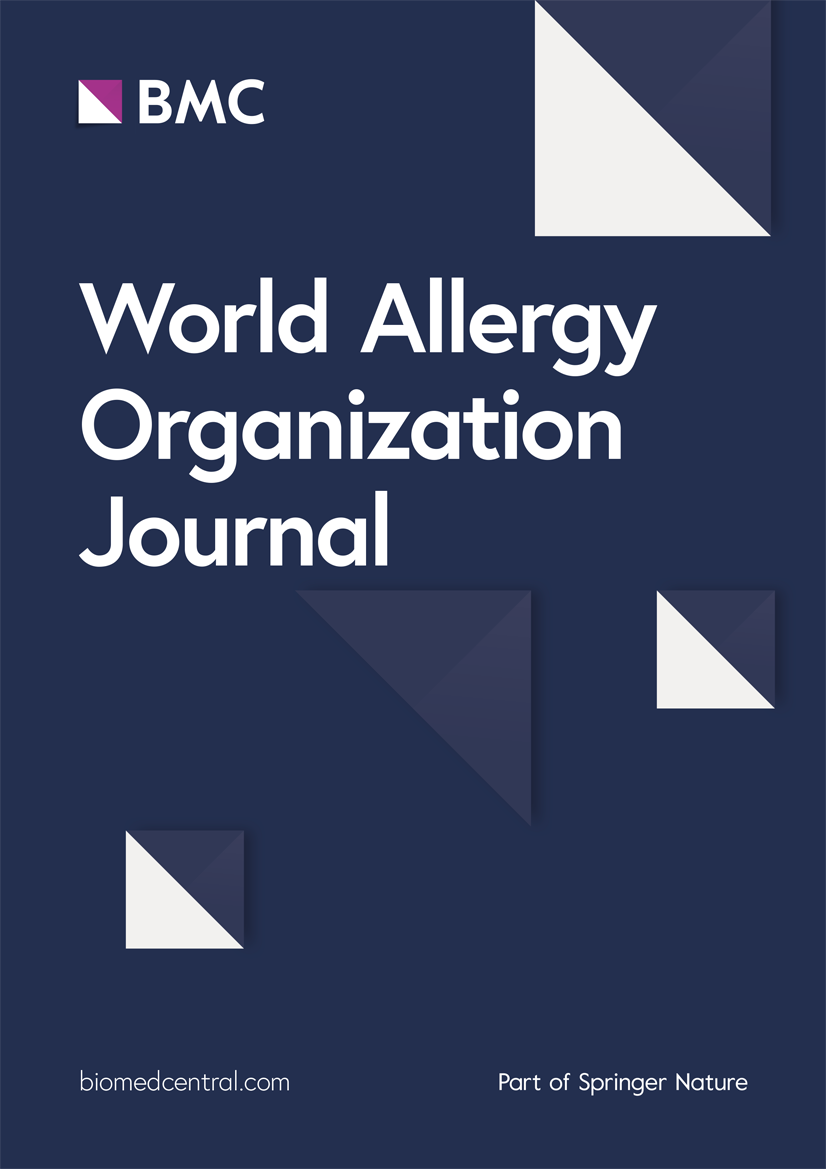Cross-reactivity and sensitization profiles of cockroach and moth allergens provide new insights in cockroach-allergic patients
IF 4.3
2区 医学
Q2 ALLERGY
引用次数: 0
Abstract
Background
Inhalant insect allergens are widely implicated as common triggers of respiratory allergies, but little is known about cross-reactivity between cockroaches and other insect allergens. This study mainly investigates sensitization profiles and cross-reactivity between cockroach allergens and moth allergens to provide insights into the clinical management of cockroach-allergic patients.
Methods
A total of 386 suspected cockroach-sensitized patients were enrolled. Sensitization rates were determined using IgE testing for common airborne allergens. Cross-reactivity was evaluated using IgE inhibition assays, immunoblotting, and basophil activation tests. Age-related sensitization patterns were analyzed to assess variability in immune response across different demographics.
Results
A high frequency of silk moth was observed in cockroach-sensitized patients, with sensitization rates to German cockroach and silk moth allergens at 81.09% and 81.61%, respectively, and a high co-sensitization rate (54.66%). Age analysis revealed similar peak sensitization of German cockroach and silk moth in school-age children and young adults, with a lower prevalence in the elderly. Additionally, cockroach crude extract can inhibit the IgE-binding of cockroach-sensitized patients' sera and silk moth crude extract, while various moths can activate basophils as well.
Conclusions
This study highlights the similar age-related sensitization patterns between German cockroach and silk moth, differing from those observed with house dust mites. Besides, cross-reactivity between different cockroach and moth allergens was confirmed through significant IgE inhibition, multiple sequences alignment of shared epitopes and basophil activation tests. These findings highlight the need to consider cross-reactivity between cockroach and moth allergens in clinical evaluations.
蟑螂和飞蛾过敏原的交叉反应性和致敏性特征为蟑螂过敏患者提供了新的见解
昆虫过敏原被广泛认为是呼吸道过敏的常见诱因,但对蟑螂和其他昆虫过敏原之间的交叉反应知之甚少。本研究主要探讨蟑螂和飞蛾过敏原的致敏特征和交叉反应性,为蟑螂过敏患者的临床管理提供参考。方法收集疑似蜚蠊致敏患者386例。对空气中常见的过敏原进行IgE检测,确定致敏率。交叉反应性通过IgE抑制试验、免疫印迹和嗜碱性粒细胞激活试验进行评估。分析了年龄相关的致敏模式,以评估不同人口统计学中免疫反应的可变性。结果蜚蠊致敏患者中蚕蛾频率较高,对德国蜚蠊和蚕蛾致敏率分别为81.09%和81.61%,共致敏率为54.66%。年龄分析显示,学龄儿童和青壮年对德国蜚蠊和蚕蛾的致敏高峰相似,老年人的患病率较低。蟑螂粗提物可以抑制致敏患者血清和蚕蛾粗提物的ige结合,而各种蛾类也可以激活嗜碱性细胞。结论本研究强调了德国蜚蠊和蚕蛾之间具有相似的年龄相关致敏模式,而与室内尘螨不同。此外,通过显著的IgE抑制、共享表位的多序列比对和嗜碱性粒细胞激活试验,证实了不同蟑螂和蛾变应原之间的交叉反应性。这些发现强调了在临床评估中需要考虑蟑螂和飞蛾过敏原之间的交叉反应性。
本文章由计算机程序翻译,如有差异,请以英文原文为准。
求助全文
约1分钟内获得全文
求助全文
来源期刊

World Allergy Organization Journal
Immunology and Microbiology-Immunology
CiteScore
9.10
自引率
5.90%
发文量
91
审稿时长
9 weeks
期刊介绍:
The official pubication of the World Allergy Organization, the World Allergy Organization Journal (WAOjournal) publishes original mechanistic, translational, and clinical research on the topics of allergy, asthma, anaphylaxis, and clincial immunology, as well as reviews, guidelines, and position papers that contribute to the improvement of patient care. WAOjournal publishes research on the growth of allergy prevalence within the scope of single countries, country comparisons, and practical global issues and regulations, or threats to the allergy specialty. The Journal invites the submissions of all authors interested in publishing on current global problems in allergy, asthma, anaphylaxis, and immunology. Of particular interest are the immunological consequences of climate change and the subsequent systematic transformations in food habits and their consequences for the allergy/immunology discipline.
 求助内容:
求助内容: 应助结果提醒方式:
应助结果提醒方式:


